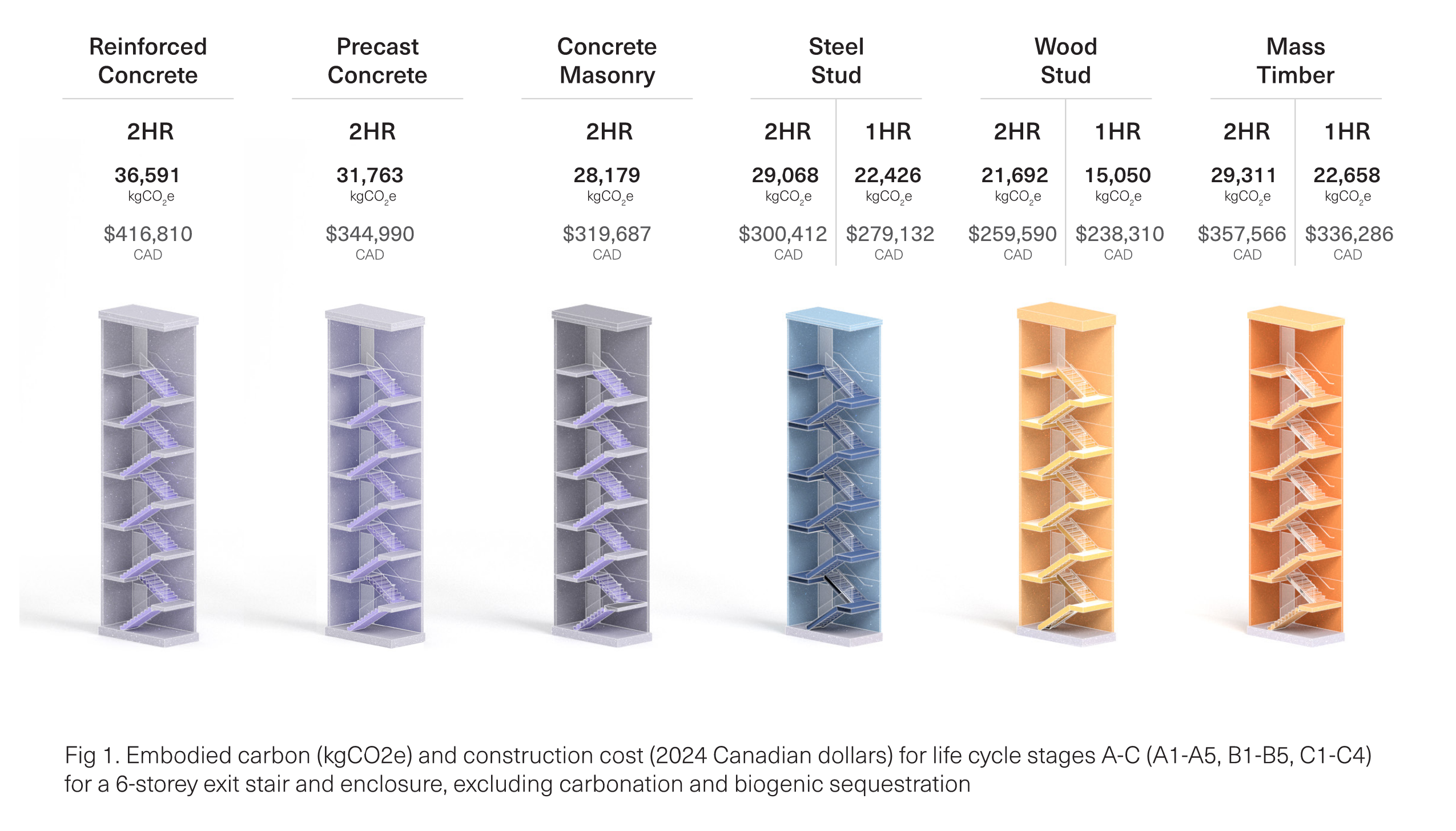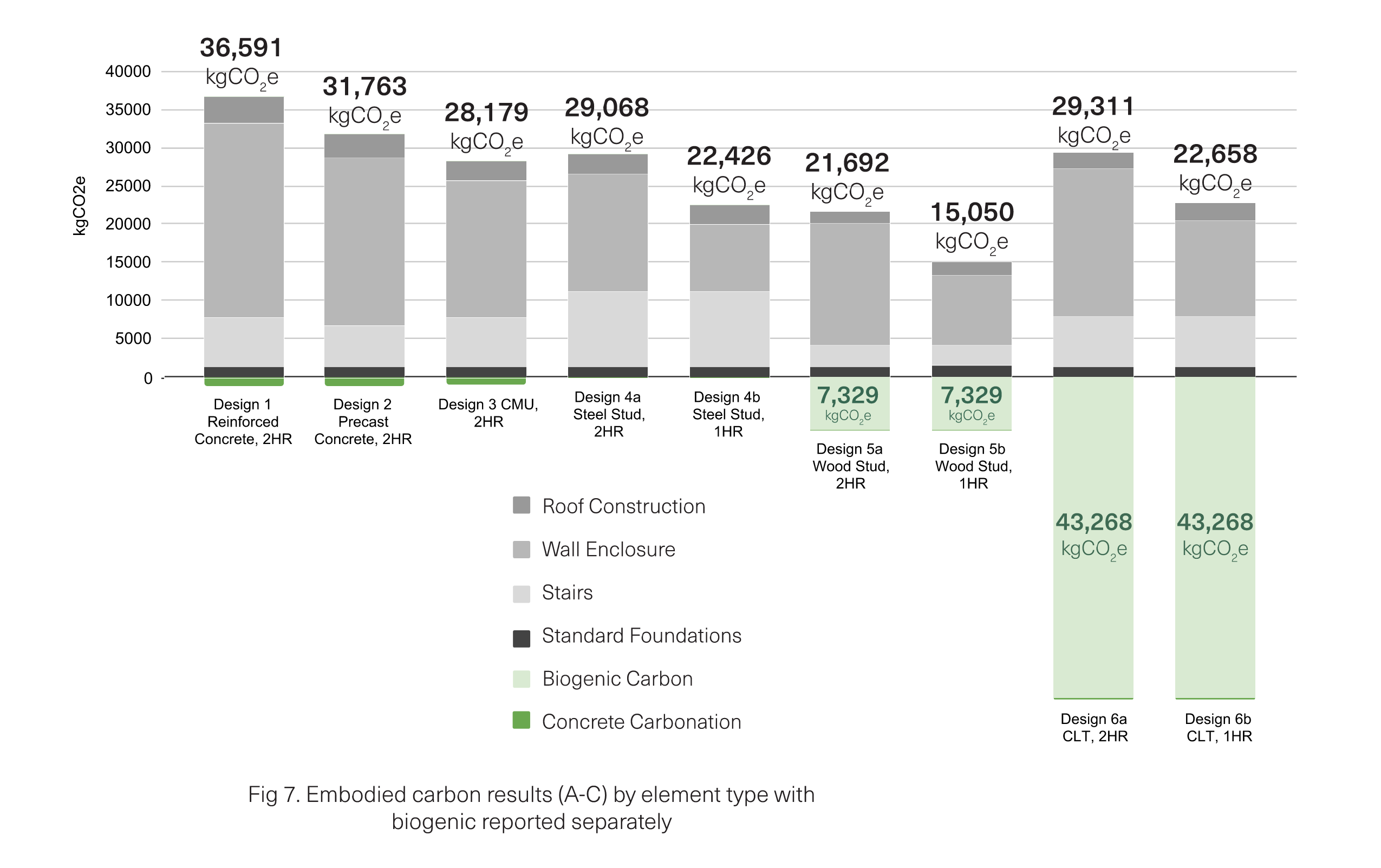January 2025
LCA Study of Exit Stair and Enclosure Construction Types
What is the embodied carbon of an exit stair?
This life cycle assessment (LCA) study compares noncombustible and combustible construction types for the exit stair and enclosure in apartment buildings of up to six storeys. Six stair construction types are assessed with a fire-resistance rating (FRR) of 2 hours for each design. Alternative designs with a 1-hour rating are also included for the steel stud, wood stud and mass timber construction type. The report compares embodied carbon life cycle impacts, biogenic carbon sequestration and direct construction cost for each type.
The results illustrate that construction type has a significant impact on embodied carbon. The noncombustible types average higher compared to the combustible types. A reinforced concrete design has over 1.5 times the embodied carbon intensity of a wood stud design with a 2-hour fire-resistance rating. This difference increases further when compared to a 1-hour rating. The steel stud design also has a lower embodied carbon intensity compared to the concrete designs, while still being classified as noncombustible construction.
This report assists architects in evaluating the cost and carbon impact of exit stair design solutions.
Click here to download the full report (January 2025)



This website, including all data and information incorporated herein, is being provided for information purposes only. For certainty, the author provides no representation or warranty regarding any use of or reliance upon this website, including no representation or warranty that any architectural designs comply with applicable laws including any applicable building code requirements or municipal by-laws. Any use of or reliance upon this website by any person for any purpose shall be at such person’s sole risk and the author shall have no liability or responsibility for any such use of or reliance upon this website by any person for any purpose. Prior to any use of or reliance upon this website by any person for any purpose, consultation with a professional architect duly licensed in the applicable jurisdiction is strongly recommended.
